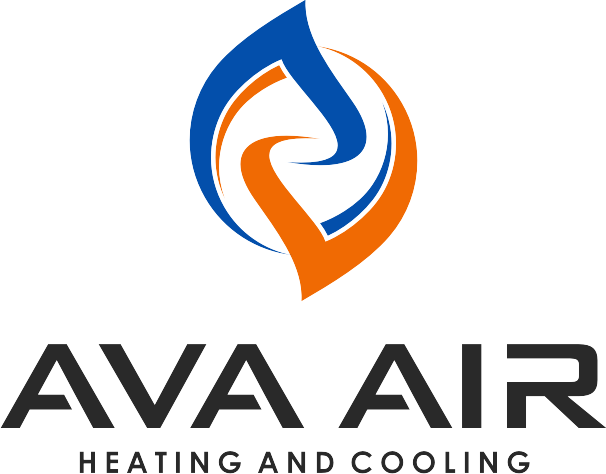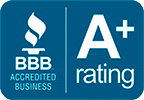
How HVAC Systems Can Protect Your Home from Mold Growth
Ask us about our service plans!
Help Keep Mold Out
Mold is one of the most common and potentially harmful issues homeowners face, especially in humid climates or damp areas of the home. Not only can mold damage the structure of your home, but it also poses significant health risks, ranging from allergies and respiratory problems to more severe conditions for individuals with compromised immune systems.
The good news is that your HVAC (heating, ventilation, and air conditioning) system can play a critical role in preventing mold growth when properly maintained and optimized.
In this blog, we’ll explore the connection between mold and humidity, how HVAC systems can prevent mold growth, and the importance of regular HVAC maintenance.
We’ll also discuss how specific HVAC features, like dehumidifiers and air purifiers, can further enhance your home’s defense against mold.



Understanding Mold Growth and Its Causes
Mold is a type of fungus that thrives in warm, damp, and humid environments. It reproduces by releasing tiny spores into the air, which can settle and grow on various surfaces if conditions are favorable. Key factors that promote mold growth include:
- High Humidity Levels: Mold thrives in environments where the relative humidity exceeds 60%.
- Moisture Accumulation: Leaks, condensation, or flooding can create damp areas where mold can grow.
- Poor Ventilation: Inadequate airflow can trap moisture and create ideal conditions for mold.
- Temperature: Mold grows best in temperatures between 60°F and 80°F, which are common indoor conditions.
How HVAC Systems Help Prevent Mold Growth
Your HVAC system is an essential tool in controlling the conditions that allow mold to thrive. Here’s how it works:
Humidity Control
One of the primary functions of an HVAC system is to regulate indoor humidity levels. Air conditioners, in particular, dehumidify the air as part of the cooling process:
- As warm air passes over the evaporator coils, moisture condenses and is removed from the air.
- This process reduces indoor humidity, making your home less hospitable to mold.
For homes in particularly humid climates, additional dehumidification tools (like whole-house dehumidifiers) can work alongside your HVAC system to keep humidity levels below the 60% threshold.
Air Circulation and Ventilation
Proper air circulation is critical for preventing mold growth. Stagnant air allows moisture to settle on surfaces, while consistent airflow helps distribute and remove moisture. Your HVAC system maintains air circulation throughout your home, ensuring that no area becomes overly damp or poorly ventilated.
Filtration of Mold Spores
HVAC systems are equipped with filters that capture airborne particles, including mold spores. While standard filters are effective at trapping larger particles, upgrading to high-efficiency filters or HEPA (High-Efficiency Particulate Air) filters can significantly reduce the number of mold spores circulating in your home.
Temperature Regulation
Maintaining a consistent indoor temperature helps prevent the conditions mold needs to grow. Sudden temperature fluctuations can cause condensation, especially on windows, walls, and pipes. Your HVAC maintenance ensures a stable indoor environment, minimizing the risk of moisture-related issues.
Importance of Regular HVAC Maintenance in Mold Prevention
Routine maintenance is vital for ensuring that your HVAC system functions effectively in preventing mold growth. Here’s why regular upkeep matters:
Keeps the System Running Efficiently
A well-maintained HVAC system operates efficiently, which is essential for controlling humidity and airflow. Dirty or malfunctioning components can hinder the system’s ability to remove moisture from the air, creating ideal conditions for mold.
Prevents Water Accumulation
Condensation is a natural byproduct of the cooling process, but if the system’s drain lines or drip pans become clogged, water can accumulate and create a breeding ground for mold. Regular inspections ensure these components are clean and free of blockages.
Detects Leaks Early
Leaks in your HVAC system, such as refrigerant leaks or ductwork gaps, can introduce excess moisture into your home. Professional HVAC maintenance helps identify and repair leaks before they become a problem.
Improves Air Filtration
Dirty or clogged air filters reduce airflow and allow mold spores to bypass the filtration system. Replacing filters regularly ensures your HVAC system effectively traps mold spores and other airborne contaminants.
Enhancing Mold Prevention with HVAC Features
In addition to regular maintenance, specific HVAC features and add-ons can provide extra protection against mold growth:
Dehumidifiers
Dehumidifiers work alongside your HVAC system to remove excess moisture from the air. Whole-house dehumidifiers are particularly effective, as they integrate directly into your HVAC system and manage humidity levels throughout your home. Benefits include:
- Consistent humidity control, even in high-moisture areas like basements.
- Improved comfort by reducing the “sticky” feeling of humid air.
- Lower energy bills, as your HVAC system doesn’t have to work as hard to dehumidify.
Air Purifiers
Air purifiers enhance indoor air quality by capturing and neutralizing airborne particles, including mold spores. Some air purifiers use UV-C light technology to kill mold spores, bacteria, and viruses, providing an extra layer of protection. Benefits of air purifiers include:
- Reduced allergens and irritants in the air.
- Improved respiratory health for your family.
- Fewer mold spores circulating in your home.
Zoning Systems
Zoning systems allow you to control the temperature and humidity in specific areas of your home. This is particularly useful for preventing mold in spaces prone to moisture, such as basements, bathrooms, and laundry rooms.
Smart Thermostats
Smart thermostats enable precise control of your HVAC system, allowing you to monitor and adjust temperature and humidity levels remotely. Many smart thermostats can integrate with dehumidifiers and air purifiers for seamless humidity management.
Mold Prevention Tips for Homeowners
While your HVAC system is a powerful tool in preventing mold growth, there are additional steps you can take to protect your home:
Keep Your Home Well-Ventilated
- Use exhaust fans in bathrooms and kitchens to vent moisture outside.
- Open windows when weather permits to improve natural airflow.
Monitor Humidity Levels
- Use a hygrometer to track indoor humidity and ensure it stays within the recommended range of 30%-50%.
- Adjust your HVAC settings or use a dehumidifier if humidity levels exceed 60%.
Fix Water Leaks Promptly
- Address plumbing leaks, roof leaks, or foundation cracks immediately to prevent moisture buildup.
Inspect and Clean Ductwork
- Dirty or damaged ductwork can contribute to poor air circulation and mold growth. Schedule professional duct cleaning and inspections as needed.
Insulate Problem Areas
- Insulate pipes and windows to prevent condensation in cold weather.
- Install vapor barriers in basements and crawl spaces to reduce moisture infiltration.
Special Considerations for Humid Climates
Homes in humid climates face unique challenges in preventing mold growth. Here are additional strategies for these environments:
- Invest in High-Efficiency HVAC Systems: Modern systems are designed to handle the demands of high-humidity regions, offering better dehumidification capabilities.
- Run the AC Continuously: Avoid turning off your air conditioner, as this can cause humidity levels to rise quickly.
- Use Ceiling Fans: Fans improve air circulation, preventing moisture from settling on surfaces.
- Check Outdoor Drainage: Ensure that your HVAC system’s outdoor unit is properly draining and that water isn’t pooling around your home.
If you invest in a quality system, professional HVAC maintenance is important to retain efficiency and durability for a long period of time.
Long-Term Benefits of Mold Prevention
Investing in your HVAC maintenance to prevent mold growth offers numerous long-term benefits:
- Improved Health: By reducing mold spores and allergens, you create a healthier indoor environment, minimizing the risk of respiratory issues and allergic reactions.
- Enhanced Home Durability: Preventing mold protects your home’s structural integrity and reduces the need for costly repairs.
- Increased Energy Efficiency: A properly maintained HVAC system operates more efficiently, lowering energy bills and reducing environmental impact.
- Peace of Mind: Knowing your home is protected from mold growth allows you to enjoy a comfortable, safe living space year-round.
How to Spot Mold Problems Early: Signs to Watch For
Even with a well-maintained HVAC system, mold can still become an issue if underlying problems in your home go unnoticed. Spotting mold growth early allows you to take corrective action before it escalates, preventing costly repairs and health risks. Here are some common signs of mold problems:
Musty Odor
One of the first signs of mold growth is a persistent, musty smell. Mold emits microbial volatile organic compounds (MVOCs), which create a distinct earthy or damp odor. If you notice this smell near vents, basements, or damp areas of your home, it could indicate mold in your HVAC system or nearby surfaces.
Visible Mold Growth
Mold often appears as black, green, or white spots on surfaces like walls, ceilings, or HVAC components. Check areas prone to moisture, such as around windows, near water pipes, or on drip pans and ductwork.
Unexplained Allergies or Respiratory Issues
Mold spores in the air can trigger symptoms like sneezing, coughing, itchy eyes, or respiratory discomfort, especially in individuals with allergies or asthma. If family members experience these symptoms at home but not elsewhere, mold may be the culprit.
Increased Humidity
Consistently high indoor humidity levels above 60% create an ideal environment for mold growth. Use a hygrometer to monitor humidity and check for condensation on windows or walls, which may indicate excess moisture.
Water Stains or Damage
Discolored patches on walls, ceilings, or floors can be a sign of water damage, which often leads to mold. Investigate the source of the water intrusion and address it promptly.
Clogged or Leaking HVAC Components
A clogged drain line or leaking ductwork can harbor moisture, encouraging mold growth within your HVAC system. Regularly inspect these components during routine HVAC maintenance.
By staying vigilant and addressing these warning signs early, you can stop mold problems before they spread. Promptly contacting an HVAC professional to inspect and clean affected areas can prevent further damage and ensure your home remains a safe, healthy environment.
The Role of Professional HVAC Services in Mold Prevention
While regular DIY maintenance helps protect your home from mold, professional HVAC maintenance can provide an extra layer of defense. Experts can perform comprehensive inspections, clean hard-to-reach areas, and ensure your system operates efficiently to manage humidity effectively.
Comprehensive System Inspections
Professional technicians are trained to spot mold-prone areas in your HVAC system that may not be immediately visible. They’ll inspect critical components like:
- Evaporator coils
- Drain pans and lines
- Ductwork
- Air filters
Identifying and addressing these areas early can stop mold from spreading and save you from costly repairs.
Duct Cleaning Services
Mold spores can accumulate in ductwork, spreading throughout your home when the HVAC system operates. Professional duct cleaning removes mold, dust, and debris, improving both air quality and system efficiency. This service is especially beneficial if your home has experienced water damage or if you notice signs of mold growth near vents.
Installation of Humidity Control Systems
HVAC professionals can recommend and install dehumidifiers or humidifiers to balance moisture levels in your home. They’ll ensure these devices integrate seamlessly with your existing HVAC system for optimal performance.
Air Quality Testing
If you suspect mold but can’t locate its source, professionals can conduct indoor air quality tests to detect mold spores and other contaminants. These tests provide clarity and guide targeted solutions to eliminate the issue.
Mold Remediation Support
If mold is found in your HVAC system, professionals can safely clean and sanitize affected components using specialized tools and techniques. This ensures that mold spores are eradicated without spreading further into your home.
Investing in professional HVAC services not only prevents mold growth but also enhances your system’s lifespan, improves energy efficiency, and creates a healthier indoor environment. Partnering with experts ensures your home stays mold-free year-round, giving you peace of mind and long-term protection.
Prevent Mold Growth with Regular HVAC Maintenance
Mold growth is a serious issue that can compromise both the comfort and health of your home. However, with the help of a well-maintained HVAC system, you can effectively manage humidity levels, improve indoor air quality, and prevent mold from taking hold. Regular maintenance, coupled with features like dehumidifiers and air purifiers, provides a robust defense against mold, especially in humid climates or damp areas of your home.
By taking proactive steps to optimize your HVAC system and follow best practices for mold prevention, you’ll not only protect your home but also ensure a healthier environment for you and your family. Don’t wait for mold to become a problem—invest in your HVAC system today and enjoy the long-term benefits of a mold-free home.

